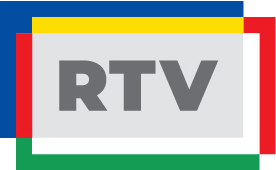Intellectual Output 3, the Methodology (Guide) for the creation and operation of the Laboratory of Media Production – Radio, Film and Television
The Intellectual Output 3 is a Methodology for the creation and operation of the media production laboratory – radio, film and television, it has 304 pages, and it is divided into several chapters. This Methodology was supplemented with a document of 64 pages, that addresses related topics, organized in different sections.
The IO has 9 chapters, which deal with the following topics:
– Camera
– Light and color
– The video camera
– Recording and playback of television images
– Frame lighting technique. Lighting styles. Lighting sources and equipment
– The digital image. Digital image processing
– TV production studio
– The sound
– Safety rules in the media lab and on the set for students and teachers
The Camera chapter presents the classic camera, the digital camera, the lens, the photographic filters and the aesthetics of the photographic image.
The chapter Light and color deals with colorimetric systems, the color chart, creating the sensation of color, the monochromatic light, the characteristics of the color of light, the effects of colors, the functions of color, the classification of colors according to their importance for the composition of the image in primary and secondary colors for the TV and computer image . The chapter proposes concrete tasks for the students.
The Video – Camera chapter presents a description of the video – camera and their classification; the digital video camera; the movements that can be performed with the video camera either by leaving the station point or without leaving it; filming angles and auxiliary filming equipment and devices.
The chapter Recording and playback of television images deals with three sections: analog television, video signal and digital television. The chapter describes image decomposition parameters, video signal, synchronization, advantages of digital television, image digitization, use of audio-video recording and playback systems.
The chapter Frame lighting technique. Lighting styles. Lighting sources and equipment includes several sections: the frame lighting technique, light sources, color temperature, definition, units and method of evaluation, artificial light sources, lighting objects, drawing up a light scheme.
The first section deals with general light (filling or exposure); the main light (the key light); modeling light; contour light; background light; effect light.
The section on Light Sources includes the categories of light according to the type of lighting, in concentrated sources (hard lights) and diffuse sources (soft lights). The fundamental functions of light are also treated: the vital function, the plastic function and the technical function.
The Color temperature represents another section, that presents its definition, units and evaluation method.
The fourth section presents the electrical sources according to their operating principles, which can be classified into three groups: incandescent sources, discharge sources and mixed light sources.
Lighting objects are treated in section 5, being divided into open-face sources, Fresnel sources, soft-light sources. And also, there are presented different types of projectors.
Section 6 presents lighting schemes, respectively the development of a lighting scheme, offering concrete solutions for complex situations that can be encountered in practice (illumination of several characters or an entire TV set for a show).
All sections include self-assessment tests at the end of the theoretical presentations.
Chapter 6 is about Digital Image. Digital image processing, detailing image file formats, image processing, digital image.
Chapter 7 introduces The TV production studio, the film set, the production direction, the video mixer, the audio mixer, signal cables, magnetic and digital sound and image carriers, magneto-optical discs.
Chapter 8 deals with Sound, presenting (in 7 sub-sections) elements about the Acoustic Chain, Recording methods – sound playback, Microphones, Playback of recorded sound, Computerized sound, Room acoustics, Mini recording studio.
Chapter 9 presents a Set of safety rules in the media laboratory and on the filming set for students and teachers, with an emphasis on hygiene and fire prevention.
The extension of this IO is represented by a document of 64 pages, which deals with the following topics: Image formats – Cinema systems; Film editing. Methods and types of montage and editing for films and television; Film music; Cinematic rhythm; Sound in Cine – TV productions.
The themes treated refer to the principles of rendering the cinematic movement, makes the movement analysis and synthesis, discusses the film classification, the types of sounds used in the field and the characteristics of a quality sound. Regarding the microphones, we might say that in the TV studio, the microphone is the first link to the audio system chain, it is presented their classification, the mixing installations.
English version is here:
English extension is here:
🌠 Romanian version of IO 3 – download
🌠 Romanian extension version of IO 3 – download
🌠 French version of IO 3 – download
🌠 French extension version of IO 3 – download
🌠 Italian version of IO 3 – download
🌠 Italian extension version of IO 3 – download
